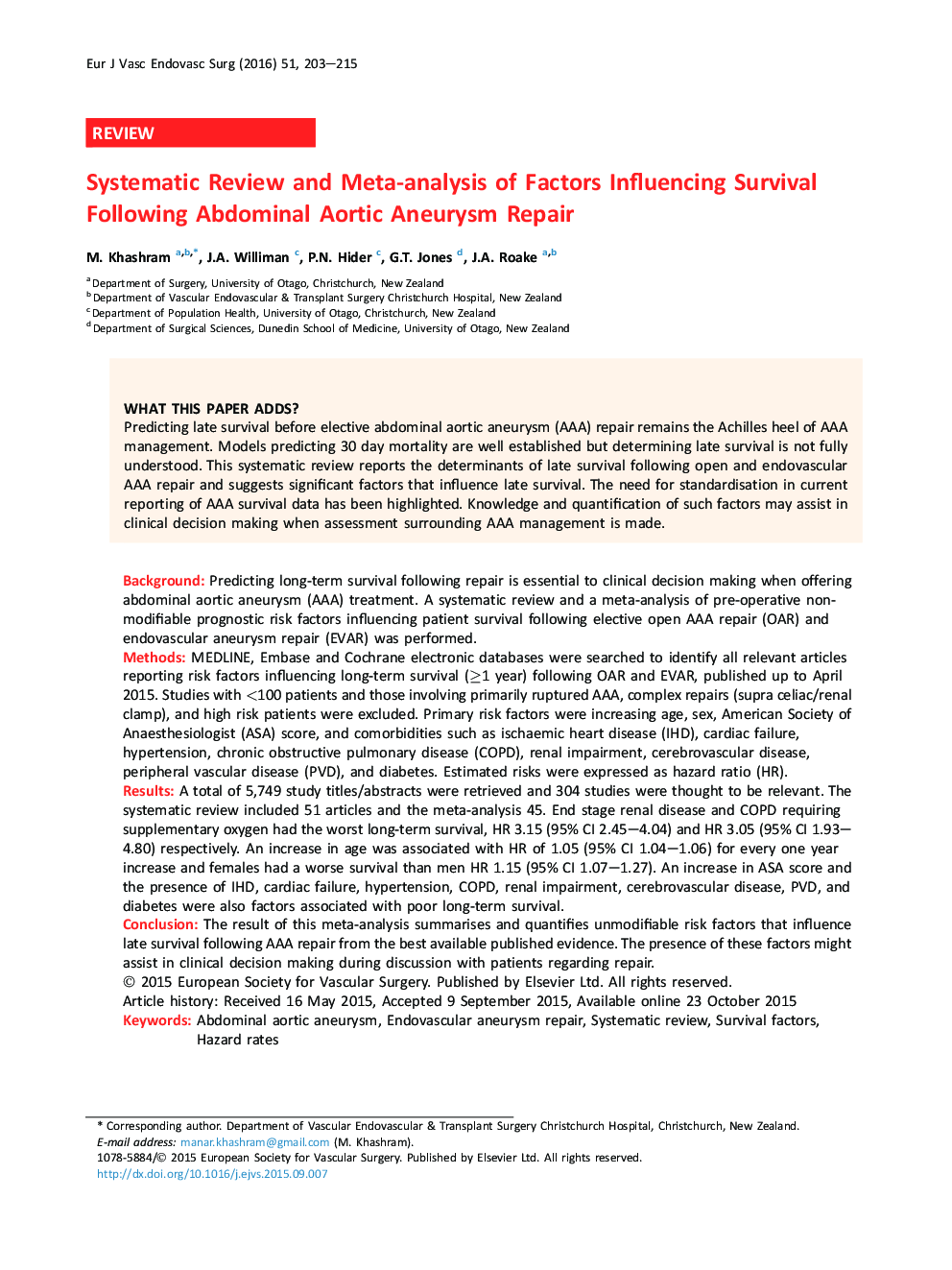| کد مقاله | کد نشریه | سال انتشار | مقاله انگلیسی | نسخه تمام متن |
|---|---|---|---|---|
| 2911711 | 1575433 | 2016 | 13 صفحه PDF | دانلود رایگان |
BackgroundPredicting long-term survival following repair is essential to clinical decision making when offering abdominal aortic aneurysm (AAA) treatment. A systematic review and a meta-analysis of pre-operative non-modifiable prognostic risk factors influencing patient survival following elective open AAA repair (OAR) and endovascular aneurysm repair (EVAR) was performed.MethodsMEDLINE, Embase and Cochrane electronic databases were searched to identify all relevant articles reporting risk factors influencing long-term survival (≥1 year) following OAR and EVAR, published up to April 2015. Studies with <100 patients and those involving primarily ruptured AAA, complex repairs (supra celiac/renal clamp), and high risk patients were excluded. Primary risk factors were increasing age, sex, American Society of Anaesthesiologist (ASA) score, and comorbidities such as ischaemic heart disease (IHD), cardiac failure, hypertension, chronic obstructive pulmonary disease (COPD), renal impairment, cerebrovascular disease, peripheral vascular disease (PVD), and diabetes. Estimated risks were expressed as hazard ratio (HR).ResultsA total of 5,749 study titles/abstracts were retrieved and 304 studies were thought to be relevant. The systematic review included 51 articles and the meta-analysis 45. End stage renal disease and COPD requiring supplementary oxygen had the worst long-term survival, HR 3.15 (95% CI 2.45–4.04) and HR 3.05 (95% CI 1.93–4.80) respectively. An increase in age was associated with HR of 1.05 (95% CI 1.04–1.06) for every one year increase and females had a worse survival than men HR 1.15 (95% CI 1.07–1.27). An increase in ASA score and the presence of IHD, cardiac failure, hypertension, COPD, renal impairment, cerebrovascular disease, PVD, and diabetes were also factors associated with poor long-term survival.ConclusionThe result of this meta-analysis summarises and quantifies unmodifiable risk factors that influence late survival following AAA repair from the best available published evidence. The presence of these factors might assist in clinical decision making during discussion with patients regarding repair.
Journal: European Journal of Vascular and Endovascular Surgery - Volume 51, Issue 2, February 2016, Pages 203–215
